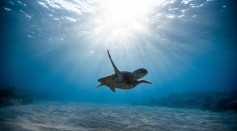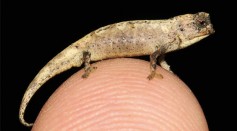madagascar

First Prehistoric Pictorial Cave Art Found in Madagascar Offers Clues Regarding Ancient Connections Between Borneo, Egypt
Extinct Elephant Birds That Weighed 700 Kilograms, Stood 3 Meters Had Eggs 150 Times Bigger Than Chicken's [STUDY]
Madagascar Needs 23 Million Years of Evolution to Bring Back Biodiversity on the Island

Madagascar's Biggest Oceanic Quake Formed the Largest Underwater Volcano

Largest Lemurs With Weight Similar to Adult Humans Found to Have Attained Gigantic Size by Eating Leaves
"Living Fossil" Rare Sighting by Shark-Hunters off the Coast of Madagascar

Ancient Frog-Face Turtle Lived from Cretaceous Period Found in Madagascar
DNA Analysis of Extinct Horned Crocodile Reveals New Spot in Family Tree of True Crocodiles

World's Smallest Reptile Discoverd in Madagascar
NASA Captured The Effects Of Tropical Cyclone Enawo Causing Landfall In Madagascar
Lost Continent: Earth’s Real Existing Continent Found Under Indian Ocean
Gene Sequencing and Color Mapping Reveal Potential New Species among Flamboyant Panther Chameleons
Madagascar Hit By Deadly Plague: Death Toll at 40
Most Popular

How Technology Is Changing the Real Estate Industry?

AI Revolution in Medical Education: Transforming How Healthcare Professionals Learn

Nikolay Karpenko Biography, Photo, Career, Accomplishments

Zombie Star Set to Light Up Night Sky: Blaze Star Could Erupt Soon





